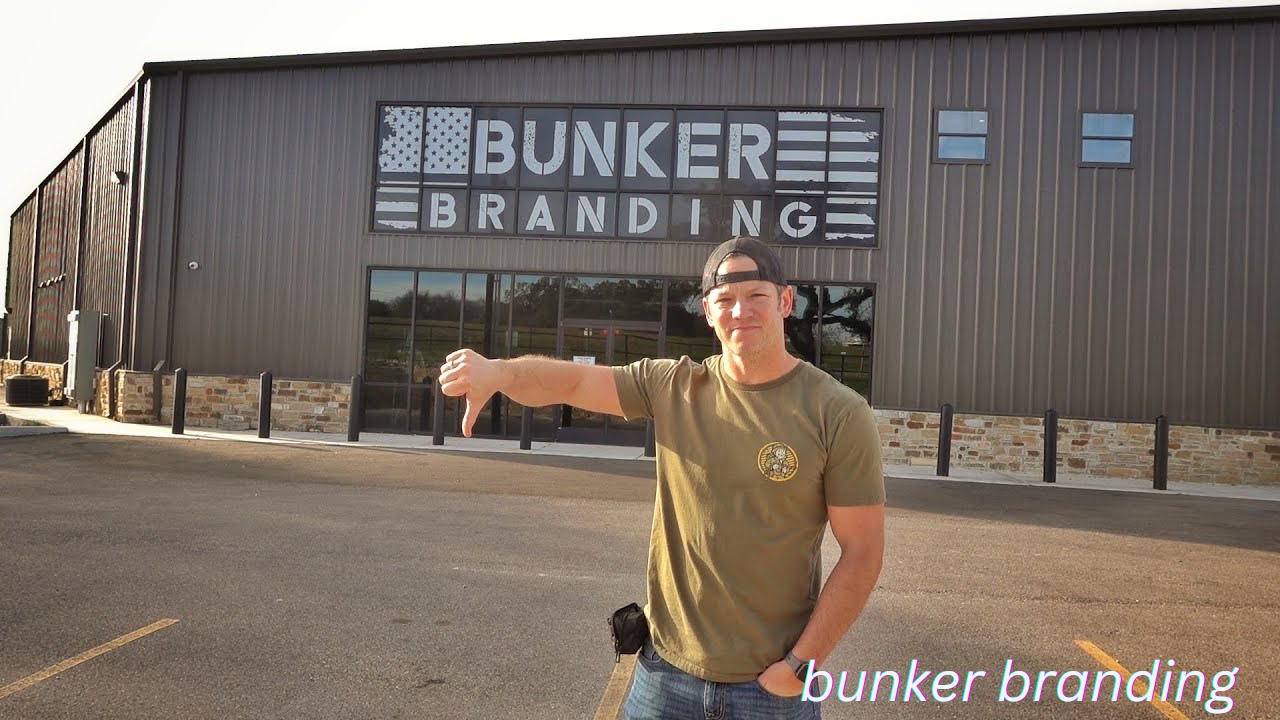In today’s fast-paced, ever-evolving market, businesses face constant challenges—whether economic downturns, social upheaval, or competitive pressures. To survive and thrive, brands must not only be adaptive but also resilient. This is where the concept of bunker branding comes into play. Bunker branding is all about building a brand identity that can withstand turbulent times, while still resonating deeply with your audience. In this article, we’ll explore how bunker branding works, its key principles, and how to create a brand that remains strong, no matter what challenges lie ahead.
Introduction to Bunker Branding
What is Bunker Branding?
Bunker branding is a concept that draws from the idea of a “bunker”—a safe, fortified place that provides protection during difficult times. In the context of branding, it refers to creating a resilient, adaptive brand identity that can endure crises, market shifts, and other challenges without losing its core values. Brands that embrace bunker branding are those that establish strong emotional connections with their audience, maintain consistent messaging, and stay true to their purpose during both good and bad times.
The term bunker branding has gained popularity as businesses face increasingly unpredictable market conditions. While most brands focus on growth and expansion, bunker brands emphasize longevity and the ability to weather any storm. This mindset helps brands focus on building trust, fostering loyalty, and creating lasting relationships with their customers, which ultimately helps them stay relevant in an ever-changing landscape.
Why is Bunker Branding Important?
In today’s volatile business world, market conditions can change overnight. A brand’s ability to remain stable in the face of external challenges is more important than ever. Bunker branding helps businesses create a strong foundation, so they can quickly adapt to shifts in consumer behavior, economic crises, or public relations issues without compromising their identity.
Bunker branding isn’t just about surviving a crisis—it’s about strengthening your position during adversity. A resilient brand can bounce back from setbacks, learn from them, and come out stronger. Moreover, it’s about building trust with customers. When people believe in a brand’s integrity and reliability, they are more likely to stay loyal during challenging times, which ultimately leads to long-term success.
Core Principles of Bunker Branding

Resilience and Flexibility
The first key principle of bunker branding is resilience—the ability of a brand to recover quickly from setbacks. Resilience in branding is about more than just bouncing back from crises. It’s about creating a brand that is agile and capable of evolving without losing its core message or values. Building a resilient brand requires businesses to be flexible, meaning they must be willing to adapt to new trends, consumer demands, and external pressures.
However, resilience doesn’t mean compromising your brand’s authenticity. Flexibility in bunker branding is about finding creative solutions to problems while staying true to your brand’s vision. For example, a brand may pivot to new product offerings or shift its marketing strategies in response to changing customer needs, all while maintaining the same core values that define the brand.
Consistency in Crisis
Another crucial aspect of bunker branding is consistency—especially during times of crisis. In moments of uncertainty, your customers need to trust that your brand will stay true to its values and mission. Consistency is essential in building that trust. When customers see that your messaging and actions align, especially when things are tough, they’ll be more likely to remain loyal.
Maintaining brand consistency during a crisis requires clear communication. Brands should have a unified voice, tone, and message across all platforms, whether it’s social media, customer service, or advertising. This consistency helps prevent confusion and reinforces the brand’s credibility and reliability. For example, companies like Patagonia have maintained their brand consistency through their commitment to environmental activism, even during economic downturns, reinforcing their values during challenging times.
Building Strong Relationships
Building strong relationships is foundational to bunker branding. A resilient brand is one that has established deep, trusting relationships with its audience, stakeholders, and employees. These relationships are built over time, through authentic communication and consistent value delivery. A bunker brand focuses on fostering loyalty by offering not just products or services, but solutions and experiences that align with its customers’ needs and values.
Loyalty in bunker branding is earned by delivering on promises, showing empathy, and standing by your values, even when it’s difficult. A strong relationship with your customers acts as a protective layer during times of crisis, ensuring that they remain supportive even when circumstances become challenging.
How to Build a Bunker Brand
Define Your Brand’s Core Values
The foundation of any successful bunker brand is a clear understanding of its core values. What does your brand stand for? What principles guide your decisions, actions, and interactions with customers? Defining these values is the first step in building a brand that can withstand any storm. Core values act as the backbone of your brand identity, guiding its response to both positive and negative events.
Your core values should align with the expectations of your target audience, creating a sense of connection and trust. If your brand promises sustainability, for example, make sure that every aspect of your business, from product sourcing to marketing campaigns, reflects that commitment. Strong core values are essential for building a bunker brand because they ensure consistency and authenticity, even during difficult times.
Develop a Solid Brand Strategy
Once your core values are established, the next step is to develop a solid brand strategy. A well-defined strategy helps you communicate your brand’s message clearly and consistently, ensuring that every touchpoint—whether online or offline—aligns with your brand identity. A strong brand strategy includes a clear vision, mission, and goals, as well as a roadmap for how your brand will evolve over time.
Your brand strategy should also take into account how you’ll respond to crises or market disruptions. By anticipating challenges and planning for contingencies, you can ensure your brand remains flexible and resilient. This proactive approach allows you to pivot when necessary without losing your brand’s essence.
Communicate with Transparency and Authenticity
Transparency and authenticity are essential when building a bunker brand. In times of crisis, customers are more likely to stick with a brand that communicates honestly about its challenges and the steps it’s taking to overcome them. Being open and truthful with your audience helps build trust, and this trust is invaluable when navigating difficult times.
Authenticity means staying true to your brand’s values, even when it might be tempting to compromise for short-term gain. Brands that communicate transparently about their actions, decisions, and even mistakes, demonstrate integrity—an essential component of bunker branding.
Create a Robust Crisis Management Plan
A crisis management plan is a vital element of bunker branding. No brand is immune to crises, whether they are external factors like a global pandemic or internal challenges like product recalls. A well-prepared crisis management plan ensures that your brand is ready to respond swiftly and effectively when faced with adversity.
This plan should include communication strategies, protocols for managing customer relations, and procedures for addressing public relations issues. The ability to act quickly and decisively during a crisis can make all the difference in preserving your brand’s reputation and maintaining customer loyalty.
Examples of Successful Bunker Brands
Case Study 1: Patagonia
Patagonia is a prime example of a brand that exemplifies bunker branding. The company has maintained its commitment to environmental sustainability and social responsibility even in the face of economic downturns and changing market conditions. Patagonia’s consistent messaging around environmental activism, coupled with its transparency in business practices, has helped it build a loyal customer base that remains supportive, even during challenging times.
Case Study 2: Apple
Apple’s ability to remain a dominant force in the tech industry is a testament to its bunker branding strategy. Through consistent innovation and a focus on premium customer experiences, Apple has built a brand that withstands market fluctuations. Even when facing tough competition, Apple has maintained its identity as a provider of high-quality, user-friendly products, making it a perfect example of resilience in branding.
Case Study 3: Nike
Nike’s branding focuses on empowerment, athleticism, and personal achievement. During controversies or external challenges, Nike has managed to maintain its image by standing firm in its commitment to inspiring people to “Just Do It.” Its ability to communicate authentically, even when faced with criticism, demonstrates its strength as a bunker brand.
Conclusion
Building a bunker brand requires a strategic approach focused on resilience, consistency, and strong relationships. By defining your core values, developing a clear brand strategy, and communicating authentically, you can create a brand that withstands crises and builds lasting loyalty. Bunker branding is not just about surviving challenges—it’s about emerging from them stronger and more connected to your audience. In a world full of uncertainties, bunker branding ensures that your brand not only survives but thrives in the long run.
FAQs
What is the difference between bunker branding and traditional branding?
Bunker branding focuses on resilience and adaptability, ensuring a brand can weather crises without losing its identity, whereas traditional branding often focuses on growth and market expansion.
How does bunker branding help during a crisis?
Bunker branding helps by providing a solid foundation of core values and strategies that can guide a brand’s response to crises, ensuring consistency and trust even in difficult times.
Can small businesses apply bunker branding strategies?
Absolutely. Small businesses can benefit from bunker branding by focusing on strong core values, building customer loyalty, and being adaptable in the face of challenges.
How do I know if my brand needs to become a bunker brand?
If your brand faces frequent challenges, market fluctuations, or consumer uncertainty, it’s a good idea to consider bunker branding to ensure long-term sustainability and resilience.
What role does social responsibility play in bunker branding?
Social responsibility is central to bunker branding because it helps build trust and loyalty with customers. Brands that demonstrate a commitment to ethical practices and social causes often create stronger, more resilient bonds with their audience.
You May Also Read: https://simpcitu.uk/bengals-chiefs/
